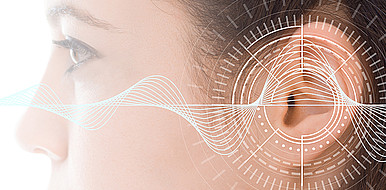Acoustic signals generated by lasers
Today, sound generation is not only used in speech or music reproduction, but also in many technological and scientific areas such as calibration, diagnostics and metrology. Depending on the application, point or linear sound sources with a wide spectrum and dynamic range are required.
State of the art
Common loudspeakers are usually based on electromechanical transducers that convert electrical signals into mechanical vibrations and finally into acoustic signals. Such devices are usually large, heavy and spatially bound, as they require a constant power supply for the necessary signal amplification. In addition, they can only reproduce sound at their location because they have a limited reproduction range of frequencies. For high-frequency or ultrasound applications, plasma transducers are used as an alternative, but they are also limited in space and frequency range.
Technology
Researchers at the University of Patras (Greece) and the Engler-Bunte Institute (EBI) at KIT have jointly developed a method to transmit acoustic information over long distances without contact and to reproduce it directly at a distant position. The new system generates complex sound or ultrasound signals by means of optoacoustic transmission: point sources of sound are generated by plasma. One or more lasers are used for this purpose. Sound sources with nearly ideal spatial, temporal and spectral characteristics can be generated. At the target location, the sound signal is interpreted directly in the surrounding atmosphere (demodulation) by receiving the local pressure wave as a signal from human hearing. The maximum frequency depends on the laser.
Advantages
The laser-generated sound is inherently broadband and thus suitable for reproducing impulsive and complex continuous sound events. The developed laser sound system can transmit sound waves over long distances without the need for on-site receiver, demodulation units or power. Depending on the laser specification, the effective bandwidth of the system can cover the entire audible range or even extend into the ultrasound range.
Options for companies
In addition to basic investigations, it has already been possible to reproduce pieces of music in good quality with a prototype. KIT is looking for partners for development projects and for industrial application.
Your contact person for this offer

Innovation Manager New Materials, Climate and Environment Karlsruhe Institute of Technology (KIT)
Innovation and Relations Management (IRM) Phone: +49 721 608-26107
Email: jan-niklas.bloetz@kit.edu


